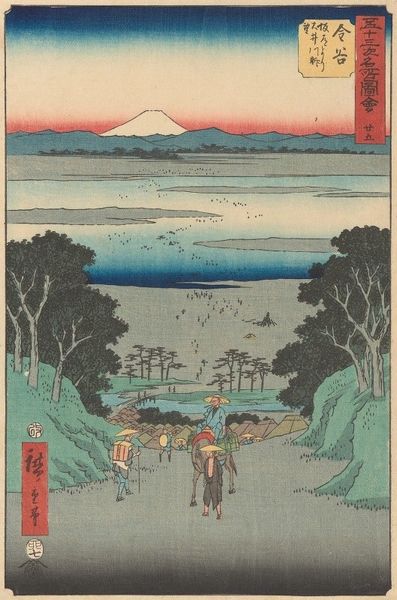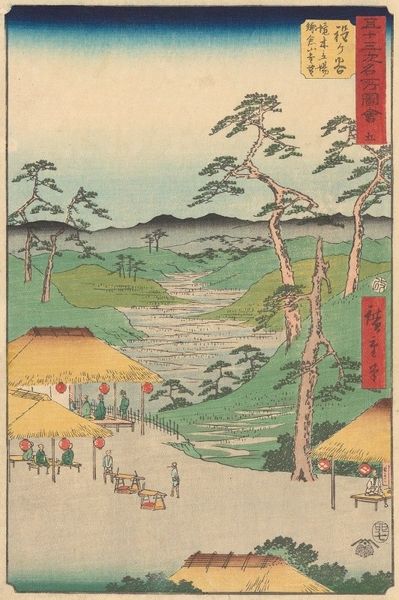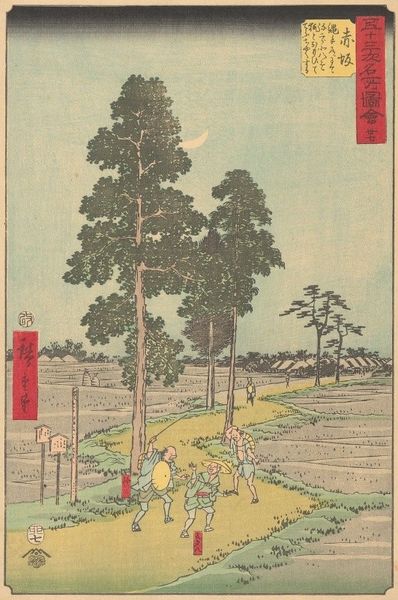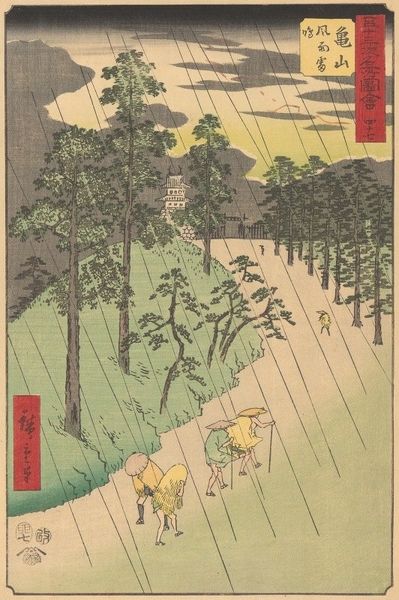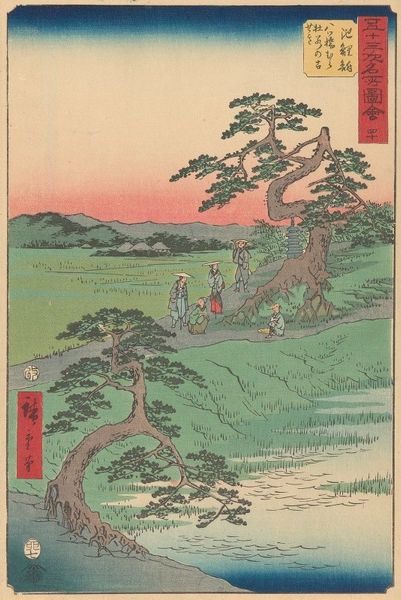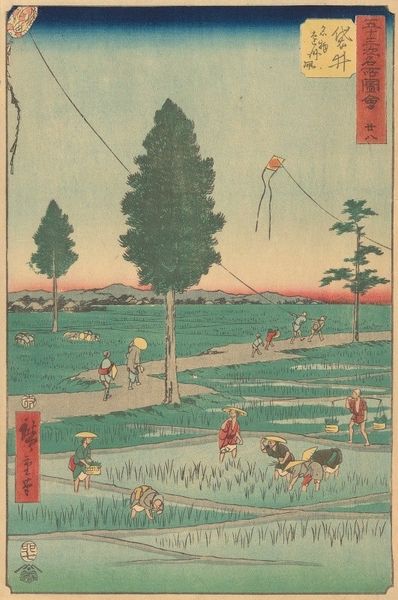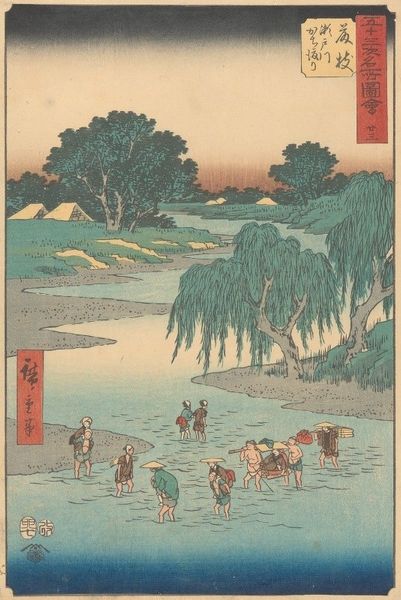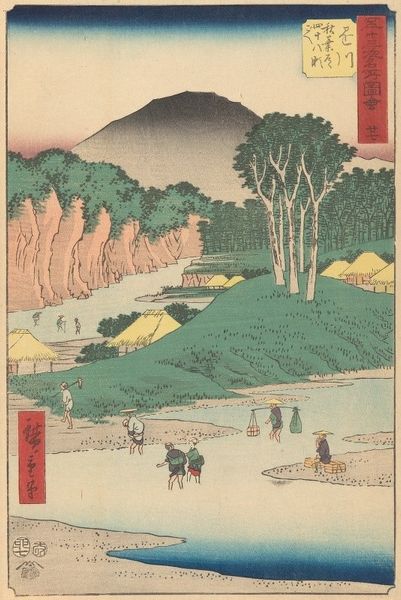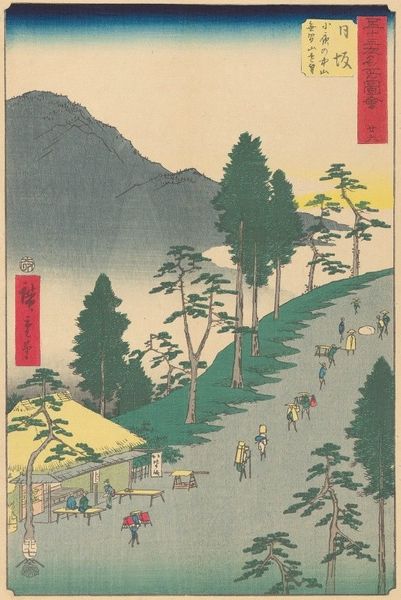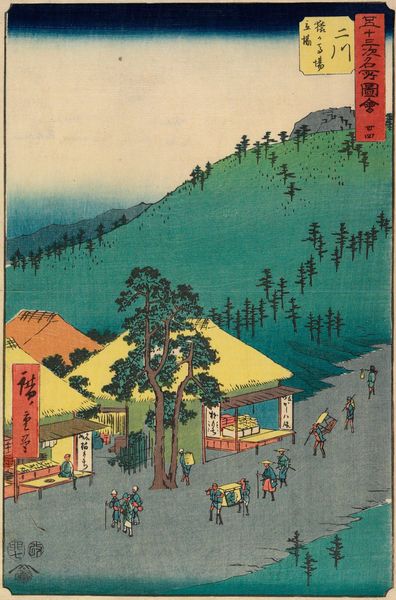
#
aged paper
#
blue ink drawing
#
asian-art
#
personal sketchbook
#
ink colored
#
sketchbook drawing
#
watercolour bleed
#
watercolour illustration
#
cartoon carciture
#
sketchbook art
#
watercolor
Copyright: Public Domain: Artvee
Utagawa Hiroshige's "Tsuchiyama" is a woodblock print that captures a scene along the Tōkaidō road, likely from the 1830s. It presents us with a serene landscape dominated by a lush forest and the majestic Mount Tsuchiyama in the background. But this isn't just about pretty scenery. The Tōkaidō was a vital artery of Edo-period Japan, connecting the capital to Kyoto. Hiroshige's series, "Fifty-three Stations of the Tōkaidō," wasn’t just a travelogue. It also offered glimpses into the lives of those who traversed this route: merchants, pilgrims, and feudal lords. The print embodies a broader cultural phenomenon, the rise of travel and leisure among the merchant classes, who had the economic freedom to journey. They were eager to explore their nation and appreciate its beauty through the safe, state-sponsored institution of travel. We can look to diaries and government records from the period to reveal the social conditions and motivations for artmaking during this time. Understanding the social context allows us to see beyond the surface of the image and appreciate its deeper cultural significance.
Comments
No comments
Be the first to comment and join the conversation on the ultimate creative platform.

